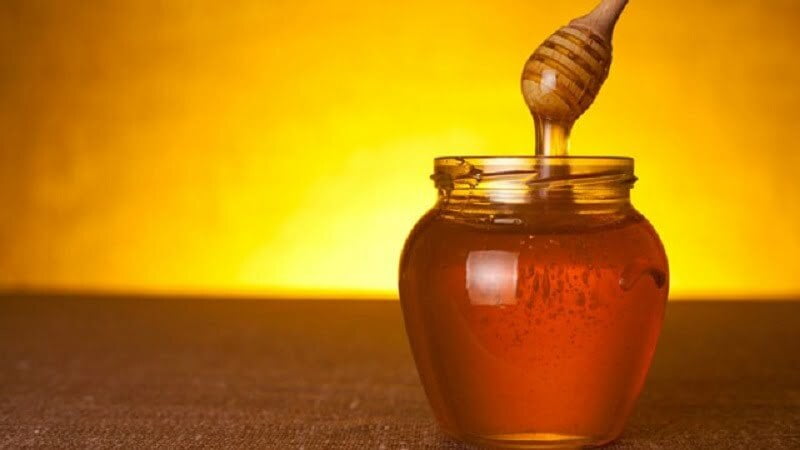Amazing benefits of honey
Honey has always been one of the most popular culinary foods and at the same time a remedy for many diseases. All over the world, our ancestors were well aware of the benefits of honey. The first known uses of honey in medicinal treatments date back to about 4000 years ago on stone tablets left by the Sumerian tribes.
Honey comprised approximately 30% of Sumerian medicinal treatments.
In India, honey is one of the most important elements of ancient and traditional Hindu medicine, namely Siddha and Ayurveda.
In ancient Egypt, it was used to treat skin and eye diseases, as well as a natural salve on wounds and burns. Other cultures also fromHoney for medicinal purposes They use various.
Today, honey is the focus of many scientific researches of medical societies to investigate and prove the ideas of our ancestors in connection with the many uses of honey. Let’s take a look at these things before buying natural honey.
-
Honey is good for your blood.
 Honey has different effects on the body and it depends on the type of consumption. If you mix honey with lukewarm water and drink it, it has very beneficial effects on the number of red blood cells in the blood.
Honey has different effects on the body and it depends on the type of consumption. If you mix honey with lukewarm water and drink it, it has very beneficial effects on the number of red blood cells in the blood.
Red blood cells are responsible for transporting oxygen in the blood to different parts of the body. Honey dissolved in lukewarm water increases the amount of hemoglobin in the blood, which prevents anemia.
Anemia caused by iron deficiency occurs when the amount of iron in the diet or its absorption is not enough and the oxygen carrying capacity in the blood decreases to less than normal.
Decreased oxygen delivery capacity leads to extreme fatigue, shortness of breath and sometimes depression and other problems. Honey neutralizes such problems by creating the capacity to transfer blood oxygen.
Sufficient oxygen in the blood is really important because it determines the level of health of the body and the ease of regeneration of body cells depends on the amount of oxygen in the blood. Initial research in this field shows the positive effects of honey on hypertension or high blood pressure. Traditionally, honey was used to reduce the negative effects of hypotension or low blood pressure.
Also, there is preliminary evidence that honey prevents the decrease in the number of white blood cells in patients undergoing chemotherapy.
In an experiment that was conducted on a limited number of chemotherapy patients who faced the risk of white blood cell deficiency, it was found that in 40% of them, after consuming 2 teaspoons of honey daily during the chemotherapy period, the risk of recurrence of white blood cell deficiency disappeared. gone.
-
Honey is healthier than sugar.
There is a lot of talk about the negative effects of white sugar on the body. Honey is a wonderful substitute for sugar that is both sweet and healthy. Although the chemical structure of honey contains simple sugars, this structure is completely different from the compounds of white sugar.
Honey contains about 30% glucose and 40% fructose, two monosaccharides or simple sugars, with 20% complex sugars. Honey also contains dextrin and starch fiber. This combination helps to regulate blood sugar levels.
-
Honey is beneficial for people who practice yoga.
Consumption of honey balances the chemical composition of the blood of people who engage in yoga exercises, and consumption of honey is strongly recommended for them.
Regular consumption of honey gives more energy to the chemical system of the body.
If you dissolve some honey in lukewarm water and eat it in the morning before starting yoga, it will strengthen the body’s chemical system.
-
Honey has antibacterial and antiseptic properties.
Consumption of honey intensifies the properties of antibacterial drugs, strengthens the function of antibodies and resists harmful microbial activities.
Several studies have been conducted on the effects of honey in the treatment of wounds. One of these studies showed that the medicinal properties of honey made the wound undergo a special cleansing process, that is, it completely destroyed the bacteria present in the wound of the participants.
In another study, the process of treating wounds and leg ulcers of 59 participants, 80% of whom did not respond positively to conventional treatments, was resumed using raw honey. Wounds of all patients healed except for one patient. In addition, infected wounds were sterilized after one week of honey treatment.
Intraditional medicine، one of the benefits of using honey is the treatment of respiratory tract infections. Daily consumption of honey solves problems such as shortness of breath and excessive phlegm in the throat.
Also, clinical research proves that medical honey destroys pathogenic agents that are carriers of those foods, including intestinal bacteria and typhoid.
It has also been proven that honey breaks down bacterial resistance so that the body does not resist antibiotics. Researchers found that honey shows positive effects in the treatment of acute infections caused by open wounds and infections caused by soil.
Honey fights infections in different ways and makes conditions difficult for pathogens to increase their resistance. Antibiotics generally target the growing bacteria, giving them a chance to break down their resistance.
It has also been found that honey disrupts what is called bacterial interaction, and this causes a decrease in the intensity of the pathogenic properties of bacteria and provides an effective opportunity for antibiotics.
-
Honey is an energizing food.
One of the most important uses of honey in traditional medicine is its immediate energy generation. As mentioned above, honey contains different types of sugar molecules, specifically glucose and fructose. However, unlike white sugar, which combines fructose and glucose to form sugar, and their digestion process also goes through more stages, in honey, these two sugar molecules are separate from each other. In this way, glucose plays the role of an energy source.
The National Honey Association of the United States strongly recommends the consumption of honey because it contains small amounts of various vitamins and minerals. A list of these materials includes: Niacin, riboflavin, pantothenic acid, calcium, copper, iron, magnesium, manganese, phosphorus, potassium and zinc.
-
Honey helps digestion
Honey reduces constipation, bloating and gas, and we are grateful for its mild laxative properties. Also, honey is rich in probiotic properties or useful bacteria such as bifido bacteria and lactobacilli, which are effective in food digestion, strengthening the immune system and reducing allergies.
Replace your sugar with honey to reduce the effects of toxic substances produced by fungi in the intestine.
-
Honey fights scalp infections and various skin infections.
Also, honey has countless benefits for the health of the scalp and body. In a short study that investigated the effect of honey on the treatment of abnormal sebum and dandruff on 30 patients, the participants were asked to apply diluted raw honey gently on the spot where the skin abnormality is located every other day for 2 Apply for 3 minutes.
Honey should be left on the skin abnormality area for 3 hours before washing. With this method of treatment, all patients showed signs of recovery. The itching was reduced and the disintegrated layers of cellular tissue healed within a week, while the wounds and sores disappeared within two weeks. The hair loss of the patients was also improved. In addition, the patients who continued this treatment method for six months and once a week, did not have any recurrence of their disease.
-
Honey helps children sleep deeply and properly.
Preliminary results from several studies show that honey improves the quality of sleep in children. According to the comments of the parents, the research resulted in the fact that honey reduces children’s nighttime coughs, and this leads to deeper and more peaceful sleep for children.
Notes worth mentioning about honey:
- Darker colored honeys have stronger antioxidant properties. Honey does not spoil and if you close the lid of the container in which you keep honey well so that air does not enter it, it will be possible to store it for a long time. In fact, archaeologists found several sealed jars of honey in the tomb of the pharaohs in ancient Egypt located in the city of Thebes and in the tomb of Tutankhamen. But there is no information about what the archaeologists did with all those jars of honey!
- Honey should not be given to children under 12 months of age because there is a risk that honey may contain the spores of botulism bacteria and lead to acute food poisoning in infants. These fungus eggs are found in dust and soil particles and may somehow find their way into honey. The baby’s immune system is not yet ready to deal with such infections.
- Another thing to remember is that honey is no different than white sugar for people with diabetes. Both honey and white sugar increase the level of blood sugar, and if these patients consume honey, the same treatment as sugar consumption should be considered for it.
Uses of honey in Siddha and Ayurveda
Probably no one has delved as deeply into the benefits of honey as the Indians. Honey was considered a gift of nature to mankind and it was considered one of the essential ingredients in every kitchen.
Honey is an important part of the diet of everyone over 12 months. They consider honey as a digestible food and believe that it is easily digested in the human body. One of the uses of honey in Siddha and Ayurveda is its medicinal use.
When medicine is mixed with honey, it is quickly and easily absorbed by the body and affects the entire body system and blood circulation. It is also said that honey maintains its medicinal properties and its effects remain for a long time.
Honey was prescribed in Siddha texts to treat ushna (in a loose translation, meaning fire) conditions such as excessive mucous secretions, vomiting, gas problems, and to remove blood impurities.
The texts of the Sayyids introduce seven different types of honey, and this difference is based on the place from which the honey is collected, the honey collected from dense mountain forests is known as mountain honey or mountain honey and is said to have the most valuable medicinal properties.
It is believed that the honey that bees collect and make this type of honey contains the properties of many medicinal plants.
Treatment methods and traditional uses of honey
honey water
1-3 teaspoons of honey should be consumed twice a day with a glass of water that has reached room temperature to strengthen the body tissue and reduce the weakness of the nervous system.
1-3 teaspoons of honey with a glass of lukewarm water immediately shows its energy-generating properties and helps in weight control.
Topical use
If you apply honey on skin scratches, it will heal quickly and minimize scarring.
Benefits of honey and lemon
Massage an equal amount of honey and fresh lemon juice topically on your face like a mask for 20 minutes and do this twice a day until the black spots disappear from your face.
Maintaining heart health
Take the juice of a fresh pomegranate and add 1 tablespoon of honey to it.
Drink every morning on an empty stomach.
Make a hole in the palm with a long needle. Fill it with honey and eat 2 to 4 dates twice a day.
Honey cures colds
If you are suffering from the side effects ofa cold or if you are one of those people who wake up every morning with a runny nose, consuming neem (Indian lilac), pepper and turmeric will help you a lot.
Here are some examples of treatment methods:
| Option 1: Grind 10 to 12 peppercorns well and let them soak overnight in 2 teaspoons of honey. (8 to 12 hours) Eat pepper seeds in the morning and chew well. You can add a little turmeric to honey. |
| Option 2: Grind the neem leaves, make it into a paste and round it into small balls and put the balls in honey and consume it in the morning on an empty stomach. Do not eat anything for 60 minutes after eating it, so that the neems pass through the digestive system. These pellets dipped in honey are also useful for treating skin and food allergies. Neem has many medicinal properties and this type is very useful. If regular neem leaves are too bitter for you, you can use thinner and more delicate leaves. |
Watermelon, ginger and mint combined cooling potion
A cooling recipe with honey and watermelon, perfect for the summer months
ingredients:
- ¼ watermelon
- 1 piece of three centimeter ginger
- ¼ cup fresh mint leaves
- Salt to taste
- Black pepper powder for seasoning
- 3 tablespoons of honey
How to prepare:
- Peel the watermelon, remove the seeds and chop it. Pour the chopped pieces into the blender.
- Peel the ginger , crush and put in a blender.
- Pour mint leaves, salt, pepper powder and honey into the blender.
- Mix all ingredients until smooth. Pass the ingredients through a strainer.
Pour the resulting syrup into glasses and serve.
Finally, we dedicate this article to some facts about honey and bees:
There are about 25,000 known species of bees in the world, unfortunately some of these species are in danger of extinction.
Almost 80% of the foods in the supermarket are prepared as a result of pollination by bees.
The first record of collecting honey by humans dates back to 6000 BC! This history was collected based on the inscriptions found in the caves and especially the spider cave in Valencia, Spain.
Each bee must travel and explore 10 million times to collect nectar, or the equivalent of 1.5 revolutions around the earth to be able to produce the equivalent of 500 grams of honey.
health magazine
www.majalesalamat.com




